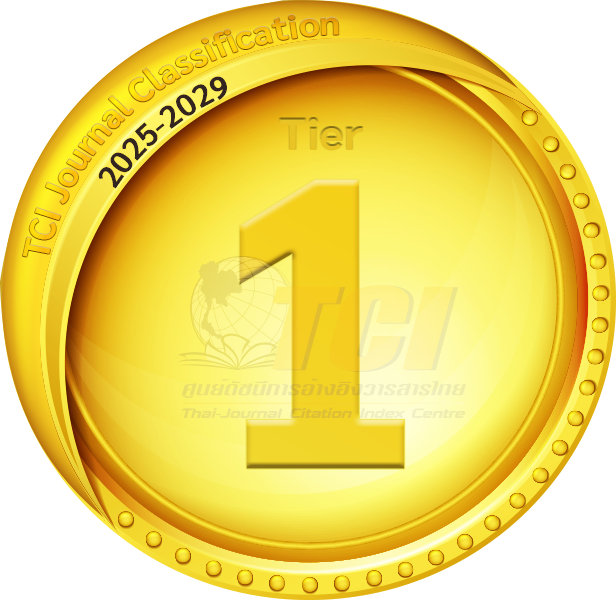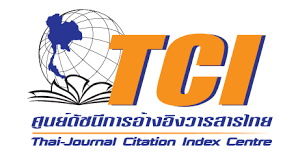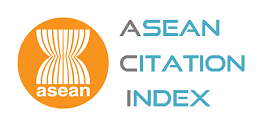Migratory Drivers of Human Capital – A case of Accountancy students in Association of Southeast Asian Nations (ASEAN)
- Pearpilai Jutasompakorn, Design and Specialised Business Cluster, Singapore Institute of Technology, Dover Drive, Singapore, *Corresponding author, E-mail: pearpilai@singaporetech.edu.sg
- Chu Yeong Lim, Nanyang Business School, Nanyang Technological University, Nanyang, Singapore
- Seck Tan, Design and Specialised Business Cluster, Singapore Institute of Technology, Dover Drive, Singapore
Abstract
This study aims to investigate and recognize migratory drivers for accountancy students within the Association of Southeast Asian Nations (ASEAN) countries. In 2020, the ASEAN region has a market of 661.5 million people, with an estimated Gross Domestic Product (GDP) of USD 3.1 trillion. The establishment of the ASEAN Economic Community (AEC) in 2015 is a major milestone for regional economic integration. One of the frameworks of AEC amongst others is to transform ASEAN into a single market and production base, reducing barriers to human capital mobility within the region and ultimately achieving a free flow of skilled professionals. However, the intra-ASEAN migration flow statistic is nowhere near AEC’s aspiration where the majority of migrants are unskilled workers. Progress towards unrestricted skilled mobility has been sluggish. accountancy is a skilled regulated profession governed by Mutual Recognition Arrangements on accountancy Services within ASEAN. Surveys were carried out with accountancy students in ASEAN countries and found that gaining learning exposure is an important migration factor for respondents, particularly those who aspire to work in Big Four audit firms or MNCs/banks located in another country within the ASEAN region. While there have been studies that address the challenges from a macro perspective, concerns from the micro perspective have largely been ignored. The findings contribute to the explanatory discourse on existing obstacles towards an aspiration of free movements of the accountancy profession; furthermore, the results have the potential to mitigate unemployment within ASEAN.
Keywords: Human Capital, Migration, Migration drivers, Accountancy, Association of Southeast Asian Nations (ASEAN), ASEAN Economic Community (AEC)
References
Adhariani, D. (2020). The influence of the ASEAN economic community on the future of the management accounting profession. Meditari Accountancy Research, 28(4), 587-611.
Ahsan, H., & Haque, M. E. (2017). Threshold effects of human capital: Schooling and economic growth. Economics Letters, 156, 48-52.
Association of Southeast Asian Nations. (2015). Handbook on Liberalization of Professional Services through Mutual Recognition in ASEAN: Accountancy Services. Jakarta, Indonesian: The ASEAN Secretariat.
Athukorala, P. (1993). International Labour Migration in the Asian Pacific Region: patterns, policies and economic implications. Asian Pacific Economic Literature, 7(2), 28-57.
Barro, R.J. (2001). Human capital and growth. The American Economic Review, 91(2), 12-17.
Batista, C., & McKenzie, D. J. (2021). Testing classic theories of migration in the lab. New York, US: SSRN.
Bernstein, A., & Beeferman, L. (2015). The materiality of human capital to corporate financial performance. New York, US: SSRN.
Blundell, R., Dearden, L., Meghir, C. & Sianesi, B. (1999). Human capital investment: the returns from education and training to the individual, the firm and the economy. Fiscal Studies, 20(1), 1-23.
Borjas, G. J. (1989). Economic Theory and International Migration. International Migration Review, 23(3), 457–485.
Budnik, K. B. (2011). Temporary Migration in Theories of International Mobility of Labour. New York, US: SSRN.
Carling, J. (2005). Gender dimensions of international migration. Global migration perspectives, 35(1), 1-26.
Champion, A. G. (1994). International migration and demographic change in the developed world. Urban Studies, 31(4), 653-677.
Chant, S., & Radcliffe, S. A. (1992). Migration and development: the importance of gender. Retrived form https://www.semanticscholar.org/paper/Migration-and-development%3A-the-importance-of-Chant-Radcliffe/c9d68694a1826bacd1923f18a6eba0f4fe506cfa#paper-header
Che Sulaiman, N. F., Saputra, J., & Muhamad, S. (2021). Effects of human capital and innovation on economic growth in selected ASEAN countries: Evidence from panel regression approach. The Journal of Asian Finance, Economics and Business, 8(7), 43-54.
Corong, E., & Aguiar, A. (2019). Economic impact of skilled labor mobility within the ASEAN Economic Community. In Skilled Labor Mobility and Migration. Gloucestershire, UK: Edward Elgar Publishing.
Crook, T. R., Todd, S. Y., Combs, J. G., Woehr, D. J., & Ketchen Jr, D. J. (2011). Does human capital matter? A meta-analysis of the relationship between human capital and firm performance. Journal of applied psychology, 96(3), 443-456.
Douglas. S. M. (1988). Economic development and international migration in comparative perspective. Population and Development Review, 14(3), 383-413
Eaqub, S. (2017). Shamubeel Eaqub: The politics of immigration. Retrived form https://www.stuff.co.nz/business/opinion-analysis/95203769/shamubeel-eaqub-the-politics-of-immigration
East-West Center. (2014). ASEAN Matters for America. Retrived form http://AsiamattersforAmerica.org
El-Agraa, A. M. (2011). The European Union: economics and policies. Cambridge, UK: Cambridge University Press.
Engelbrecht, H. (1997). International R&D Spillovers, Human Capital and Productivity in OECD Economies: An Empirical Investigation. European Economic Review, 41(8), 1479-1488
Gentile, E. (2019). Skilled Labor Mobility and Migration: challenges and opportunities for the ASEAN economic community. Gloucestershire, UK: Edward Elgar Publishing.
Goss, J., & Lindquist, B. (1995). Conceptualizing International Labor Migration: A Structuration Perspective. International Migration Review, 29(2), 317–351.
Gray, D. (2018). There's more to Asia than just China, ANZ tells Aussie farmers. Sydney Morning Herald. Retrived form https://www.smh.com.au/business/the-economy/australian-agribusinesses-told-there-s-much-more-to-asia-than-china-20180425-p4zbkt.html
Greenwood, M. J. (1997). Internal migration in developed countries. Handbook of population and family economics, 1, 647-720.
Griliches, Z. (1997). Education, human capital, and growth: a personal perspective. Journal of Labor Economics, 15(1), 330-344.
Haini, H. (2019). Internet penetration, human capital and economic growth in the ASEAN economies: evidence from a translog production function. Applied Economics Letters, 26, 1774-1778.
Hermele, K. (2021). The discourse on migration and development: International migration, immobility and development. London, UK: Routledge.
Huelser, S., & Heal, A. (2014). Moving freely?: Labor mobility in ASEAN. Retrived form https://idl-bnc-idrc.dspacedirect.org/bitstream/handle/10625/54251/IDL-54251.pdf?sequence=1&isAllowed=y
International Labor Organization (ILO). (2018). ILOSTATS. Retrieved from http://www.ilo.org/ilostat/
Iredale, R. (2000). Migration Policies for the Highly Skilled in the Asia-Pacific Region. International Migration Review, 34(3), 882-906.
Karemera, D., Oguledo, V. I. & Davis, B. (2000). A gravity model analysis of international migration to North America. Applied Economics, 32, 1745-1755.
Kikkawa, A., & Suan, E. B. (2019). Trends and patterns in intra-ASEAN migration: Skilled Labor Mobility and Migration. Gloucestershire, UK: Edward Elgar Publishing.
Klinthäll, M. (2006). Immigration, integration and return migration: International symposium on international migration and development, Turin, Italy: United Nations Secretariat.
Kofman, E. (2004). Family-related migration: a critical review of European studies. Journal of Ethnic and Migration Studies, 30(2), 243-262.
Koser, K., & Salt, J. (1998). The geography of highly skilled international migration. International Journal of Population Geography, 3(4), 285-303.
Kurekova, L. (2011). Theories of migration: Conceptual review and empirical testing in the context of the EU East-West flows. London, UK: University College London.
Lim, L. L., & Oishi, N. (1996). International labor migration of Asian women: distinctive characteristics and policy concerns. Asian and pacific migration journal, 5(1), 85-116.
Lin, X., & Yang, X. (2017). From human capital externality to entrepreneurial aspiration: Revisiting the migration-trade linkage. Journal of World Business, 52(3), 360-371.
Luekitinan, W. (2014). Employability and job mobility: Critical skills for new graduates in ASEAN. Global Journal of Business Research, 8(5), 1-8.
Massey, D. S., Arango, J., Hugo, G., Kouaouci, A., Pellegrino, A., & Taylor, J. E. (1993). Theories of international migration: A review and appraisal. Population and development review, 19(3), 431-466.
Mendoza, D. R., & Sugiyarto, G. (2017). The long road ahead: status report on the implementation of the ASEAN mutual recognition arrangements on professional services. Manila, Philippines: Asian Development Bank.
Nafukho, F. M., Hairston, N. & Brooks, K. (2004). Human capital theory: implications for human resource development. Human Resource Development International, 7(4), 545-551.
Nathaniel, S. P. (2021). Environmental degradation in ASEAN: assessing the criticality of natural resources abundance, economic growth and human capital. Environmental Science and Pollution Research, 28, 21766-21778.
Natter, K. (2018). Rethinking immigration policy theory beyond ‘Western liberal democracies’. Comparative Migration Studies, 6(1), 1-21.
OECD Development Centre. (2013). Economic Outlook for Southeast Asia, China and India 2014: Beyond the Middle-Income Trap. Retrived form https://www.oecd-ilibrary.org/development/economic-outlook-for-southeast-asia-china-and-india-2014_saeo-2014-en
O'Neill, A. (2021a). Total population of the ASEAN countries from 2011 to 2021. Retrieved from https://www.statista.com.singaporetech.remotexs.co/statistics/796222/total-population-of-the-asean-countries/
O'Neill, A. (2021b). Gross domestic product of the ASEAN countries from 2011 to 2021. Retrieved from https://www.statista.com.singaporetech.remotexs.co/statistics/796245/gdp-of-the-asean-countries/
Onyusheva, I., Thammashote, L., & Kot, S. (2018). ASEAN: Problems of regional integration. Espacios, 39, Article ID 36, 1-5. Retrived form http://w.revistaespacios.com/a18v39n36/a18v39n36p02.pdf
Ortega, F. & Peri, G. (2013). The effect of income and immigration policies on international migration. Migration Studies, 1(1), 47-74.
Papademetriou, D. G., Sugiyarto, G., Mendoza, D. R., & Salant, B. (2016). Achieving Skill Mobility in the ASEAN Economic Community: Challenges, Opportunities, and Policy Implications. Manila, Philippines: Asian Development Bank.
Pichayasupakoon, T. (2014). The impact of the ASEAN Economic Community (AEC) on the recruitment of accountants: A case study of listed firms on the Stock Exchange of Thailand. Humanities, Arts and Social Sciences Studies, 14(2), 1-24.
Quah, J. S. T. (2018). Why Singapore works: five secrets of Singapore’s success. Public Administration and Policy: An Asia-Pacific Journal, 21(1), 5-21.
Romer, P. M. (1990). Human Capital and Growth: Theory and Evidence. Carnegie-Rochester Conference Series on Public Policy, 32(1), 251-286.
Ruhs, M. (2006). The potential of temporary migration programmes in future international migration policy. International Labour Review, 145(1-2), 7-36.
Sahn, D. E. & Alderman, H. (1988). The effect of human capital on wages and the determinants of labor supply in a developing country. Journal of Development Economics, 29(2), 157-183.
Scott, J. (2018). Come on in! Australia’s secret to avoiding recession. Retrived form https://www.smh.com.au/business/the-economy/come-on-in-australia-s-secret-to-avoiding-recessions-20180313-p4z427.html
Segal, U. A. (2019). Globalization, migration, and ethnicity. Public Health, 172, 135-142.
Shor, E., & Roelfs, D. (2019). Climate shock: Moving to colder climates and immigrant mortality. Social Science & Medicine, 235, 112397.
Simon, C. (1998). Human Capital and Metropolitan Employment Growth. Journal of Urban Economics, 43(2). 223-243.
Skeldon, R. (2002). Trends in international migration in the Asian and Pacific Region. International Social Science Journal, 52(165), 369-382.
Song, S. (2018). Political theories of migration. Annual Review of Political Science, 21, 385-402.
Sugiyarto, G., & Agunias, D. R. (2014). A ‘freer’flow of skilled labour within ASEAN: aspirations, opportunities and challenges in 2015 and beyond. International Organization for Migration (IOM) and Migrant Policy Institute, 11, 1-12.
Sweetland, S. R. (1996). Human capital theory: Foundations of a field of inquiry. Review of Educational Research, 66(3), 341-359.
Tibshraeny, J. (2017). Jenée Tibshraeny teases out an economic theory for why migration policy should be driven by well-being not GDP growth. Retrived form https://www.interest.co.nz/opinion/89853/jen%C3%A9e-tibshraeny-teases-out-economic-theory-why-migration-policy-should-be-driven-well
Tilly, C. (2011). The impact of the economic crisis on international migration: a review. Work, Employment and Society, 25(4), 675–692.
Tirasriwat, A. (2017). The Readiness and Willingness of Thai Professional Accountants towards their Working in ASEAN: Problems and Solutions for Preparedness. Journal of Business Administration The Association of Private Higher Education Institutions of Thailand, 6(2), 156-174.
Windzio, M. (2018). The network of global migration 1990–2013: Using ERGMs to test theories of migration between countries. Social Networks, 53, 20-29.
World Economic Forum. (2015). The Human Capital Report 2015. Retrived form http://www3.weforum.org/docs/WEF_Human_Capital_Report_2015.pdf
Yapa, P. W. S. (1998). Accounting Education and Training in ASEAN: the Western Influence and the Experience of Sin. International Journal of Accounting and Business Society, 6(2), 26-47.
Zanabazar, A., Kho, N. S., & Jigjiddorj, S. (2021). The Push and Pull Factors Affecting the Migration of Mongolians to the Republic of South Korea. SHS Web of Conferences, 90, 1-9. Retrived form https://www.shs-conferences.org/articles/shsconf/pdf/2021/01/shsconf_eccw2020_01023.pdf

Indexed in


Search